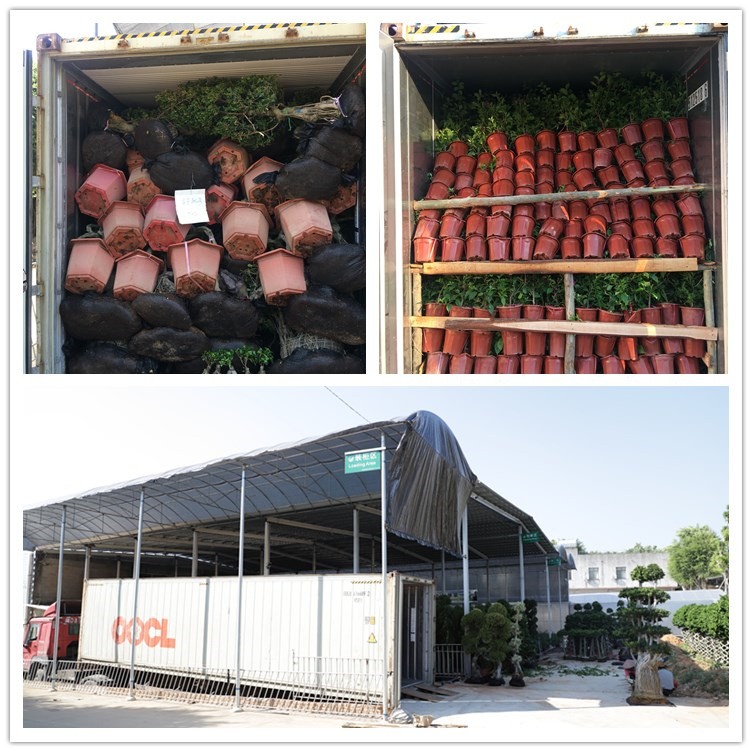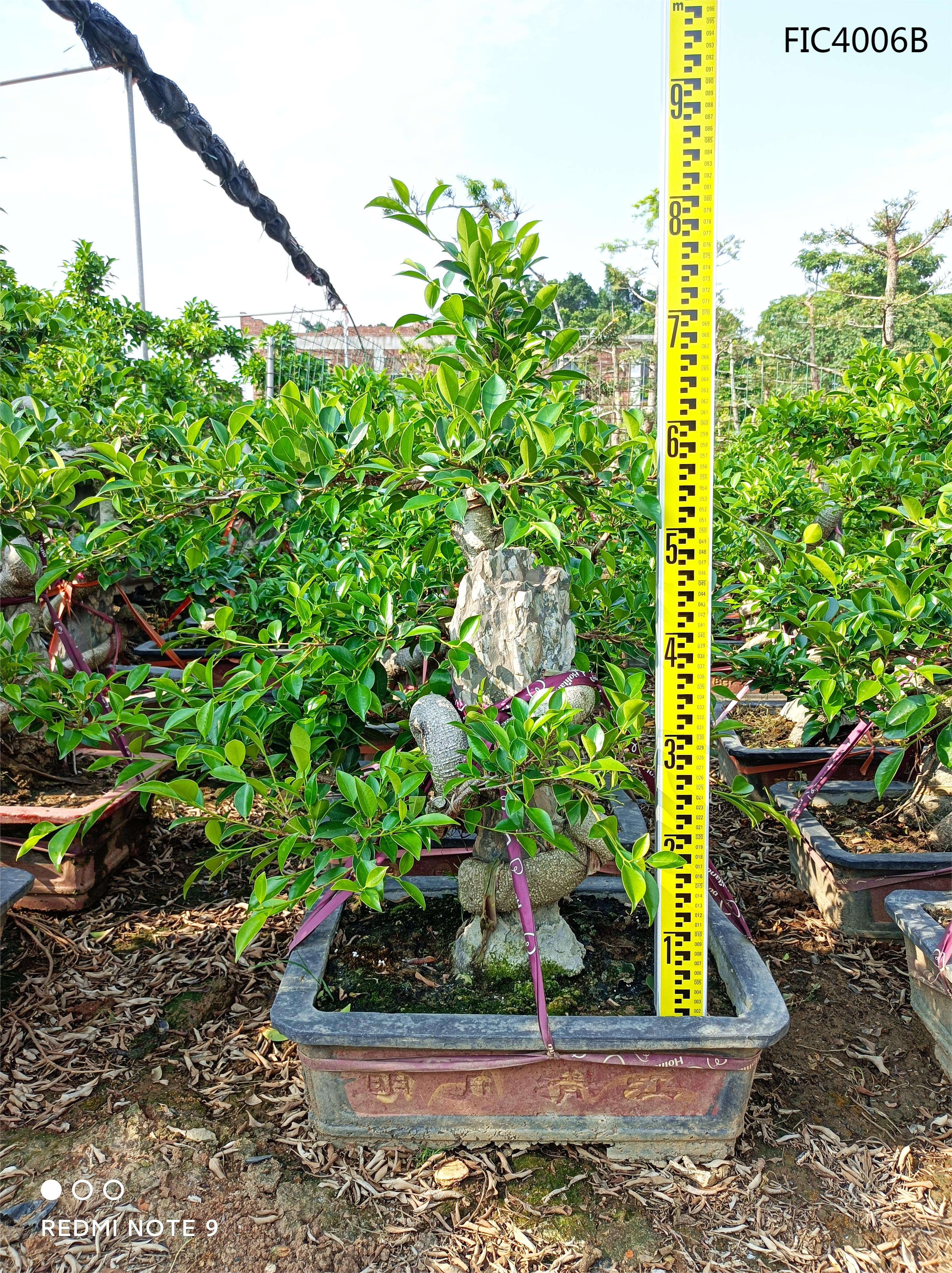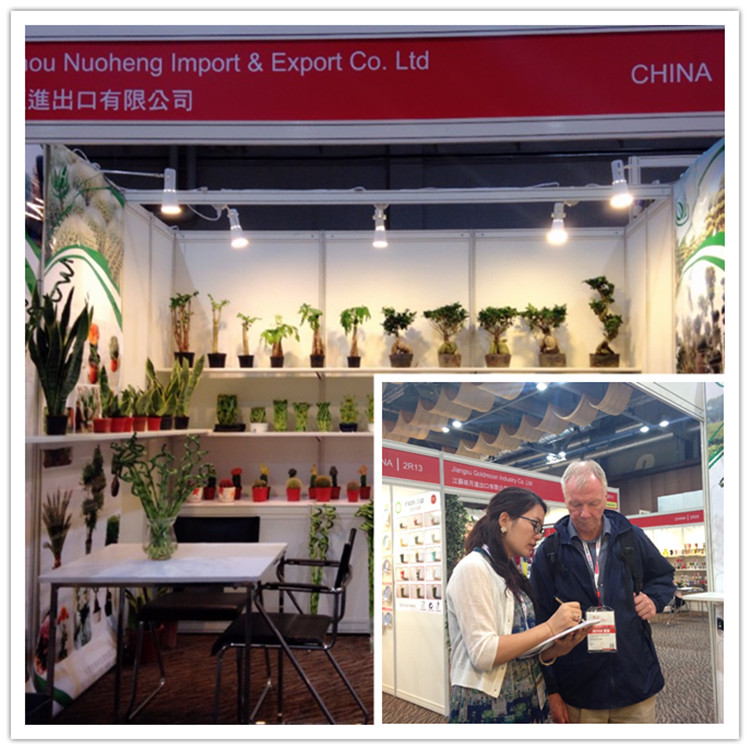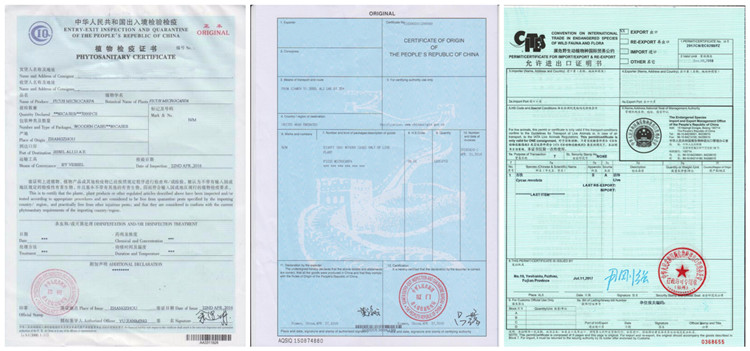Products
Nice Bonsai Ficus Bonsai With Good Price Ficus formosana Stone Root.
Product Description
Ficus formosana. Ficus formosana is a genus of Ficus in the Mulberry family. Shrubs, 1.5-3 m tall; Branchlets, petioles, veins sparsely pubescent when young; The branches are slender and the nodes are short. Leaves membranous, oblanceolate. Figs solitary leaf axils, ovate-globose; Male flowers scattered inner wall of ficus, sessile or sessile, perianth segments 3-4; Gall flowers, perianth segments 4-5, navicular, ovary globose, sessile, style short, lateral; Female flowers, sessile or sessile, perianth segments 4, style long, stigma funnel-shaped. Achene globose, smooth. Flowering period from April to July.
Pot: pot
Medium: soil
Package: Cartons
Prepare time: two weeks

Exhibition
Certificate
Team
FAQ
1. What do foliage plants refer to?
Foliage plants, generally referring to plants with beautiful leaf shape and color, native to tropical rain forests with high temperature and high humidity, need less light, such as coarse ribgrass, arrophylla, ferns, etc.
2.What is the curing temperature of foliage plants?
Most of the foliage plants have poor cold resistance and high temperature resistance. After the arrival of winter, the indoor temperature difference between day and night should be as small as possible. The indoor minimum temperature at dawn should not be less than 5℃ ~ 8℃, and the daytime should reach about 20℃. In addition, temperature differences can also occur in the same room, so you can put plants that are less resistant to the cold higher up. Leafy plants placed on windowsills are vulnerable to cold winds and should be shielded by thick curtains. For a few species which are not cold resistant, local separation or small room can be used to keep warm for winter.
3. What are the unique characteristics of foliage plants?
(1) Negative tolerance is incomparable to other ornamental plants. (2) Long viewing period. (3) Convenient management. (4) Various kinds, various gestures, complete size, different charm, can meet the needs of various occasions of green decoration. Suitable for viewing in indoor conditions for a long time.






